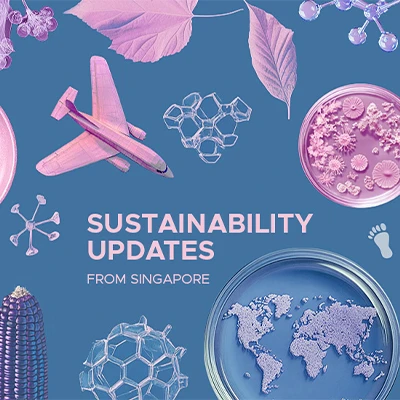Building that efficient and reliable transit system can’t be done by any public agency alone – it requires collaboration with the private sector. “Companies value the openness of Singapore in test-bedding and adopting new technologies,” Choy Yong Cong, Vice President of Singapore’s Economic Development Board (EDB) told the Oliver Wyman Forum via email. “The city-state presents real and challenging use-cases.”
Choy will speak on a panel concerning smart cities at the Global Mobility Executive Forum in May 2023. Registrations to join the event are now open.
How does a smart city enable sustainable mobility?
As a land-scarce city with a growing population, Singapore needs an efficient transportation infrastructure to run smoothly and sustainably. This is why the EDB’s work is focused on developing a vibrant ecosystem where different private and public stakeholders can come together to develop, test and commercialize innovative mobility solutions.
At the same time, as we develop more resource-efficient, sustainable, and reliable transport solutions to address our national needs, these are also solutions that could be exported as the world becomes increasingly urbanized.
And expectations, especially among younger individuals, have changed. They want their governments to maintain food and energy security while ensuring long-term sustainability. They want environmentally ambitious policies on decarbonization, renewable energy, reducing waste, and the circular economy.
Singapore’s 2030 Green Plan is ambitious in its scope and includes mobility-related targets like implementing 60,000 charging points. How does the EDB’s work fit into that plan?
Sustainable development has always been integral to the Singapore Story. We use digital technologies and data analytics to provide greater comfort, convenience, reliability, and support for various stakeholders in our mobility ecosystem.
EDB has identified mobility as an emerging sector that presents strong economic growth opportunities for Singapore. We partner with companies to pursue activities such as product development, R&D, and manufacturing for AVs, EVs and advanced air mobility that will complement their efforts in addressing mobility needs for the region and beyond.
The growth of the mobility ecosystem is also in line with Singapore’s interest in innovation activities. One automaker, for example, allows EV buyers the ability to customize their vehicle’s performance features — a first of its kind customer experience in the automotive industry — while energy companies continue to grow their EV charging business in Singapore. We help companies establish in Singapore, as a springboard to offer innovative mobility services regionally and globally.
What are some lessons learned from Singapore’s sandbox approach to private firms testing their mobility services?
Singapore functions as a living lab, providing an attractive location for companies to develop and commercialize smart mobility technologies and solutions for the global market.
Companies value the openness of Singapore in test-bedding and adopting new technologies and solutions. The city-state presents real and challenging use-cases.









